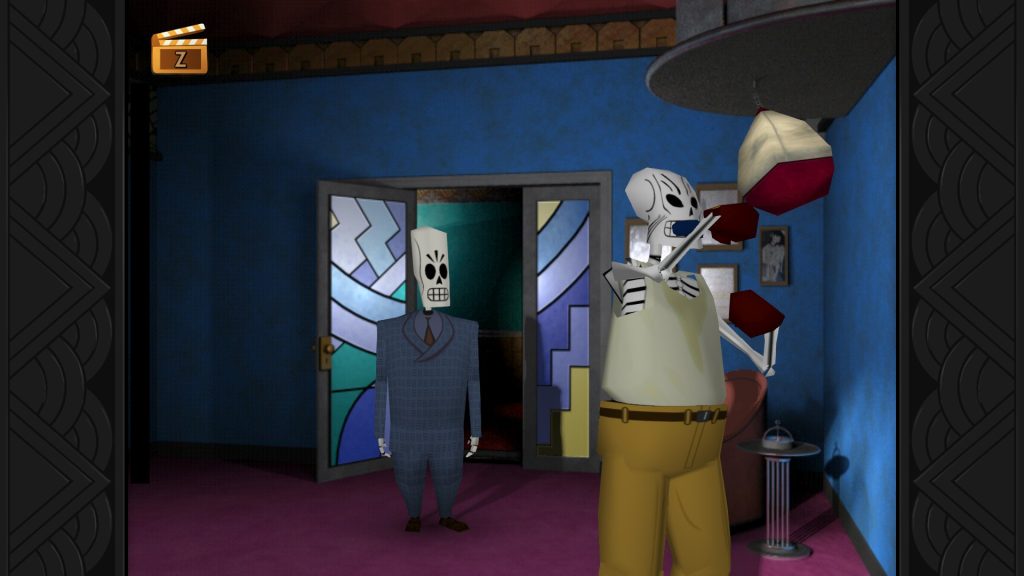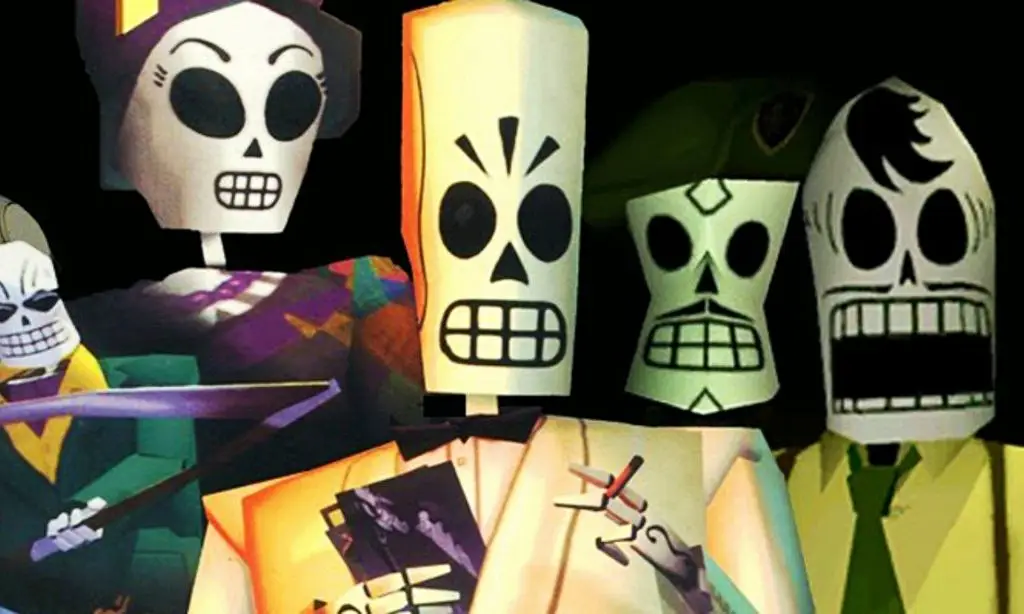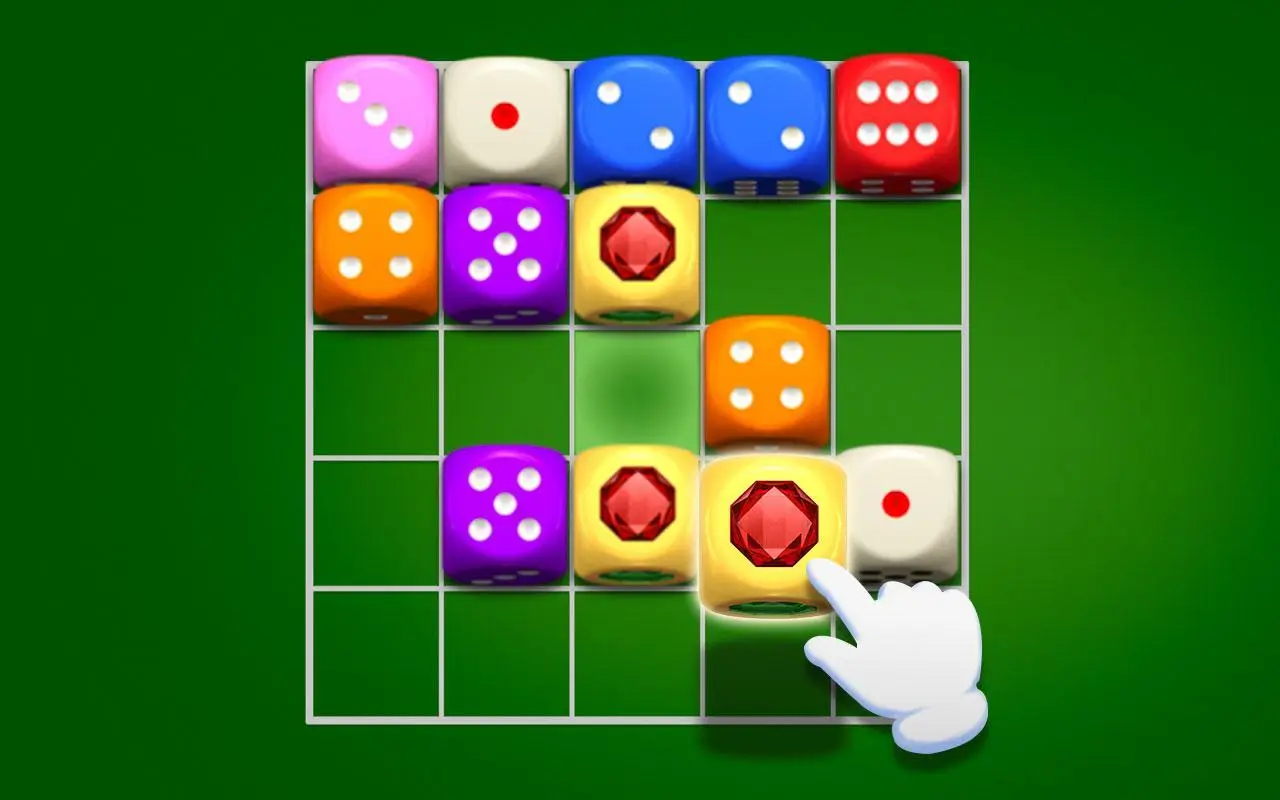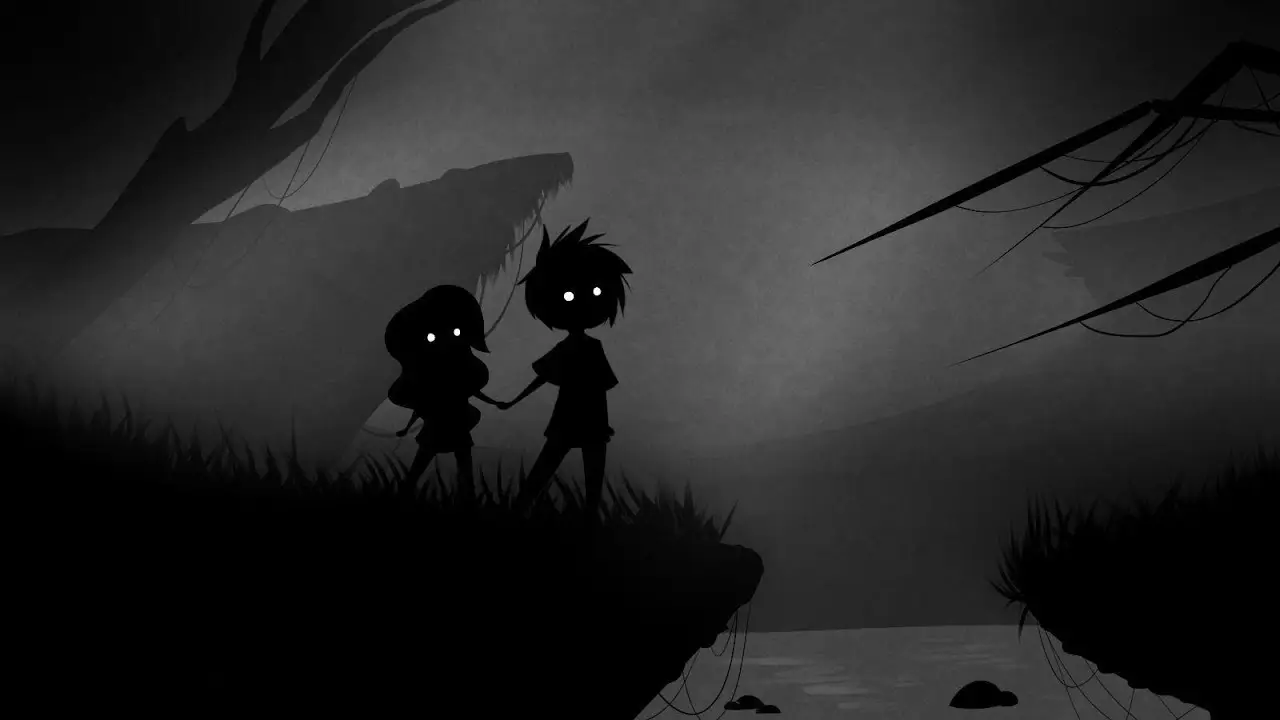Grim Fandango requires a non-standard approach to completion. Here, the logic of direct solutions does not work – each action is tied to the atmosphere, context and unique scenario conditions. This is a complex world with its own architecture of meanings, characters and symbolic layers. The main movement of the player unfolds in four large acts, each of which requires careful study of the environment, use of objects and understanding of the hidden mechanisms of the game.
Year One: Nuevo Marrow and the First Steps
The first stage is the tutorial and introduction to the world. The main goal is to help Manny break out of the system and go beyond his boring office assignment. The Grim Fandango walkthrough in this stage offers you the opportunity to learn about controls, item systems, and dialogue principles.
Key actions:
-
Gaining access to Domingo’s computer.

-
Hacking the application system using a street cleaner’s card.
-
Exploring the Death Department building and interacting with the characters.
-
My first trip to the city, meeting with Glat.
The first act contains many local mini-tasks. For example, access to the bureau requires distracting the secretary and choosing the right lines. This is where the main principle comes into play: each dialogue is not just a plot, but a way to change the behavior of others.
Year Two: Rubakava and the Expansion of Mechanics
 Rubakava is a hub location with many entry points and transitions. The main character now owns a bar and participates in more complex schemes. Here, completing Grim Fandango requires active logistics between zones and characters.
Rubakava is a hub location with many entry points and transitions. The main character now owns a bar and participates in more complex schemes. Here, completing Grim Fandango requires active logistics between zones and characters.
What to do:
-
Get access to the docks.
-
Sabotage the race track.
-
Bribe a waiter to get the keys to the warehouse.
-
To hold a roulette drawing.
In the second act, the “item-reaction-new location” chain appears. For example, a bottle of wine is used not as a drink, but as part of a chemical analysis in a laboratory. This requires a rethinking of the “inventory” approach.
Year Three: The Stone Forest and Atmospheric Development
The third act is an intermediate transition between episodes. The main setting is the Stone Forest, a complex enclosed area with minimal freedom of movement. It is here that the game provides maximum focus on puzzles and interaction with mechanisms.
Solving Grim Fandango puzzles – what to do:
-
Use the railway map on the dead platform.
-
Properly start the elevator connected to the car.
-
Impose security by disguising yourself as a worker.
Every action in the Stone Forest is accompanied by visual and sound effects that add to the oppressive atmosphere. The player must act under time pressure and with limited understanding of the overall map of the area. This is where the Grim Fandango dialogue with secondary characters becomes particularly important.
Year Four: The Climax and Nuevo Marrow
The final act returns to Nuevo Marrow, but in a different capacity – now the city is changed, the characters have restructured, and the intrigue is revealed. Manny turns into a key figure of the revolution and must destroy the corrupt system from within.
Complete passage of the final act:
-
Hacking the Department’s archives.
-
Using encrypted files to gain access to the train.
-
The final exposure of the authorities.
-
Conducting Glottis and Swords to Eternal Rest.

Puzzle solutions and hidden interactions: how to play Grim Fandango
The passage of Grim Fandango requires not logical thinking in the classical sense, but an intuitive and associative approach. This is a quest where game design is based on context rather than patterns. Many puzzles deliberately violate the usual game rules in order to stimulate attentiveness, observation and the ability to abstract from straightforward thinking.
The game environment constantly gives signals that are not fixed by the interface, but are transmitted visually, through subtle changes in the environment, sound effects or facial expressions of characters. One of the main conditions for success is attention to secondary details that hide critical clues.
For example, the elevator scene in the Stone Forest: the standard approach is to find a lever or control panel. However, the game breaks expectations by requiring you to navigate the area, activate a drain, cause rust to weaken the metal mechanism, and then activate the platform’s movement. This solution requires observation of the terrain, analysis of object interactions, and the ability to see the hidden chain of events.
Another example is interaction with a train. At first glance, the car does not have a control element. But it is worth activating a certain sequence of actions: move the character to the desired point, change the weight load, use the anchor mechanism on the roof and combine this with pressing the button on the platform. Only when all conditions are fulfilled at the same time does the car react. This creates the effect of a “living world” where events depend not on a simple click, but on the correct stage composition.
Another characteristic feature is the polymorphism of objects. The same object can be used in different places, but with different results. For example, a piece of rope can be used as a trap tool or an element to activate a mechanism. Grim Fandango does not provide a clear notification when an item is “suitable.” Everything must be checked manually, by experimenting in a natural environment, just like in real life.
Characters and their significance in the script structure
Grim Fandango builds its narrative not around events, but around characters. Each character in this story serves multiple functions: they provide emotional support, act as a plot driver, and act as a logical element of the game’s mechanics. It is through the characters’ behavior that the game signals changes in pace, mood, approach to a pivotal point, or hidden threats.
Characters:
- Glottis is the embodiment of dynamism. His behavior directly reflects the current dramatic load of the scenario. If he is cheerful, it means that the player is moving in the right direction. If he is panicking, it means that a hidden danger is nearby. His physical presence often symbolizes the importance of a location, and if Glottis leaves, it means that the scene has lost its meaning or requires an update. Additionally, he participates in numerous puzzles related to technology, where his knowledge of mechanisms is essential for activating complex systems, from racing cars to trains.
- Swords is the moral center of the story. She not only sets the romantic tone, but also balances the cynicism of the world around her. Her reactions serve as a clear structure for the emotional peaks of the game. When she is cold, it means that Manny is straying from his true purpose. When she is present, the story approaches catharsis. Her lines often serve not only as an artistic function, but also as clues in the most intricate episodes, particularly in the final chapters.
- Domino Hurley is an antihero who reflects Manny’s internal conflict. He is not just an enemy, but a representation of what Manny could have become. Domino’s lines are filled with double meanings, each of which reveals the structure of the bureaucratic machine in the world of the dead. While Domino’s dialogues do not directly advance the plot, they always indicate the upcoming “node,” a place where a significant change will occur.
- Hector Lemans is the final image of evil, but his power lies not in direct confrontation, but in his ability to manipulate the structure of the world. He does not fight; he controls. All scenes featuring Hector are filled with symbolism: color, light, and frame composition. Hector’s presence signifies that the choice has been made and there is no turning back.
- Secondary characters are functional modules. For example, Carla from the airport security service doesn’t just check documents. It transmits information about control, borders, betrayal. Characters like the drunken sailor or the ticket seller always carry a detail without which the system does not work. Sometimes — literally, as a mechanism, less often — metaphorically, as a semantic key.
It is impossible to play Grim Fandango without a deep understanding of the characters, as the story is born from their interactions.
Conclusion
 The passage of Grim Fandango is a gradual immersion in the symbolism of death, a reinterpretation of the world, and a philosophical exploration of the theme of transition. The structure of the game, as well as the plot, revolves around the repeated analysis of actions, interactions with characters, and careful observation of the environment. In Grim Fandango, every move has consequences.
The passage of Grim Fandango is a gradual immersion in the symbolism of death, a reinterpretation of the world, and a philosophical exploration of the theme of transition. The structure of the game, as well as the plot, revolves around the repeated analysis of actions, interactions with characters, and careful observation of the environment. In Grim Fandango, every move has consequences.
 en
en  ru
ru  de
de  ar
ar  es
es  hi
hi  fr
fr  nl
nl  it
it  pt
pt  el
el 










